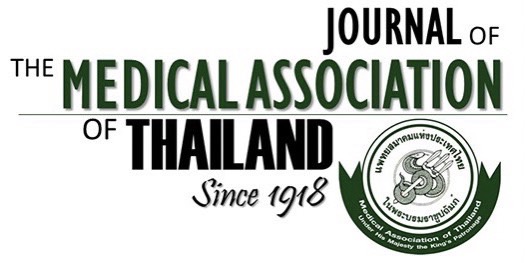A Survey of Awareness, Opinion and Reported Use of Clinical Practice Guidelines (CPG) of the Royal College of Anesthesiologists of Thailand
Siriporn Pitimana-aree MD*, Ketchada Uerpairojkit MD**, Yodying Punjasawadwong MD***, Tanit Virankabutra MD****, Somrat Charuluxananan MD**
Affiliation : * Department of Anesthesiology, Siriraj Hospital, Mahidol University, Bangkok ** Department of Anesthesiology, Chulalongkorn University, Bangkok *** Department of Anesthesiology, Chiang Mai University, Chiang Mai **** Department of Anesthesiology, Ramathibodi Hospital, Mahidol University, Bangkok
Background : Up to the present (2006), The Royal College of Anesthesiologists of Thailand (RCAT) has
proposed and revised six practice guidelines. For guidelines to achieve their objectives, anyone who gets
involved needs to be aware of the guidelines, be able to accept, and adhere to them. Although the authors did
introduce their guidelines by several passive means, the authors have not yet ascertained what the result were.
Objective : The primary objective of the present study was to assess awareness, opinion, limitation, and re-
ported use of guidelines. The secondary objective was to identify factors associated with variation, agreement,
and reported use of guidelines.
Materials and Methods : A cross sectional, self-report survey study was conducted. An anonymous question-
naire including prepaid-addressed reply envelopes was mailed to 600 anesthesiologists and 1,300 nurse
anesthetists, nationwide, based on the college’s list. The questions covered respondents’ general characteris-
tics: awareness, agreement, and reported use of the existing guidelines; opinion on implementation media,
which guidelines the members need, their local guidelines, and the impact of guidelines on their practice. All
data were extracted and reported using descriptive statistics. Multiple logistic regression was done to identify
factors associated with an agreement with and a reported use of the guidelines.
Results : The overall response rate was 33.4% and nurse anesthetists had a higher response than anesthesiolo-
gists. Forty-six percent of the respondents were aware of the existing guidelines. This result corresponded to
percentage of those who had read the guidelines (41%). Among the six existing guidelines, the least two
guidelines reported use of and agreement with, were those for labor analgesia and conscious sedation (23-
28%; 24-28%). The guidelines for spinal anesthesia received the most response (46%). For respondents who
had read the guidelines, most of them (80% to 94%) rated the level of agreement and reported use as good to
excellent. The respondents also rated the announcement of the guidelines during the annual meeting of the
Royal College of Anesthesiologists of Thailand as the best implementation strategy. Impracticability, inad-
equate dissemination, and un-cooperation among colleagues were the three most important obstacles of
using the guidelines. In addition, the present study demonstrated three significant factors, anesthesiologists,
regional hospitals, and general hospitals, as associated with reporting frequent use of and high agreement
with the guidelines.
Conclusion : The low level of awareness and reported use of the present guidelines among the members reflects
poor implementation and dissemination. However, the present study reveals some information that will guide
the authors to introduce intensive and targeted interventions to encourage the members to comply and adhere
to the guidelines designed to improve the quality of patients’ care.
Keywords : Guidelines, Awareness, Opinions, Practice, Questionnaire, Anesthesia



